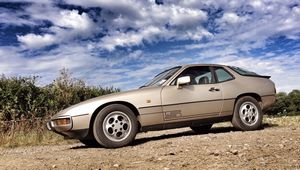|
By accessing or using The Crittenden Automotive Library™/CarsAndRacingStuff.com, you signify your agreement with the Terms of Use on our Legal Information page. Our Privacy Policy is also available there. |

Power Is Not Always The Answer - Why A Light Car Is A Good Car
|
|---|
|
|
Power Is Not Always The Answer - Why A Light Car Is A Good Car
Matt Hubbard
Speedmonkey
February 2, 2015
Fast cars are brilliant, powerful cars are enormous fun. But you can experience just as much of a thrill in something with not much power.
Speed is generally equated with outright pace in a straight line. Take one car, give it fat tyres, fit a huge lump with oodles of power under the bonnet and hey ho let's go! That's the recipe for a good time, isn't it?
Yes it is. But only some of the time. In fact only a small amount of the time. Humungous power is great at the drag strip or on a wide, open track but on a normal road, in normal (British) weather you can't use most of the power at your disposal.
A Porsche 911 Turbo has 520bhp, four wheel drive and four wheel steering. Driving it makes the hairs on the back of your neck stand up, but on the road you'll only ever drive it at 50% and even then you'll be flouting the law.
Step down a few rungs and the 336bhp, rear wheel drive Cayman GTS provides more useable thrills on the road. But it's still overpowered for day to day driving.
The Cayman GTS, 911 Turbo, Jaguar F-Type V8, Audi R8, Mercedes C63 AMG and other cars with a decent amount of feel at the wheel and truck loads of power at the wheels are frankly over endowed for everyday driving on normal roads.
The reason for this is the disconnect that comes from too much power, too much weight and too much size for roads with speed limits, hedges, SUV-run mums, kerbs, pot holes, hopeless taxi drivers, pensioners in Skodas, mud in the road and all the other crap that's thrown at us whilst we're minding our own business whilst pushing our car to the limit.
And that's just the point. The limit of all the above cars is way higher than normal road conditions allow.
Instead you need something smaller, lighter and less powerful.
You need enough power to overtake a Jazz but not so much power you can't slam your foot down immediately post the apex of a corner without end up 100 yards into a field. You need enough feeling at the wheel that you know the leaves your front wheels are riding over are oak and not sycamore. You need to know if your rear tyres have slid 10mm, 6 inches or 3 feet.
Even if your V8 powered supercar has four wheel drive you can still overdo it quite easily, four wheel drifts into a jagged kerb are relatively straightforward when enough power is applied at the wrong point in the rain. Or between October and March.
I want to be able to make a complete hash of it and know that if the car cuts loose it does so slowly enough and with enough warning I can correct the slide before I end up embedded into the 44 tonner coming the other way.
What are these mythical cars we can drive to the limit without fear of damage or injury to ourselves or the car itself?
You won't be surprised to hear that you can drive pretty much any hot hatch as hard as you like and still have enough control to throw it with enthusiasm around the lanes, down an A-road and down that gravel track that leads to the local woods that you're not meant to go down but sometimes you do.
The Golf R is the apex predator of the hot hatch world but for sheer chuckability any of the recent Renaultsport Meganes, an Astra VXR or Fiesta ST have the perfect blend of power, grip, balance and poise to make that grimace turn into a grin.
But you don't even have to splash out £25k on a hot hatch to experience the thrill of flinging a motor vehicle around the Queen's highway in such a fashion as you enjoy the experience and don't end up eating hospital food at the end of the journey.
All you need are enough brake horses to pull the skin off a rice pudding, less weight than two race horses and a steering system that transmits the specification of tarmac the council ordered up your finger tips and through your bum to your brain. Oh, and suspension that means the car won't fall over when you turn a corner.
What you want is to be able to lose the front, lose the back, catch the skid, and gain enough experience of your car on the road that you have enough data in your grey matter that you know that next time you can get within 99% of the car's limit.
And you can do that in a lot of differing, and quite cheap, cars. Mazda MX5, any old Porsche (the front engined ones have perfect 50/50 balance), Golf GTi Mk2, Mini Cooper S, Clio 182 - all will give you all you need.
Lotus have known this all along which is why the venerable Elise is still bought by enthusiasts who know their onions but aren't bothered about having somewhere to put their weekend bag. Toyota cottoned on to the idea too which is why the GT86 is so good. Caterham haven't ever stopped making cars that are perfect for people who like to drive with a degree of finesse.
Fast, loud, powerful cars are brilliant but small, light, not quite so powerful cars can be just as entertaining on the real roads we drive on every day.


















